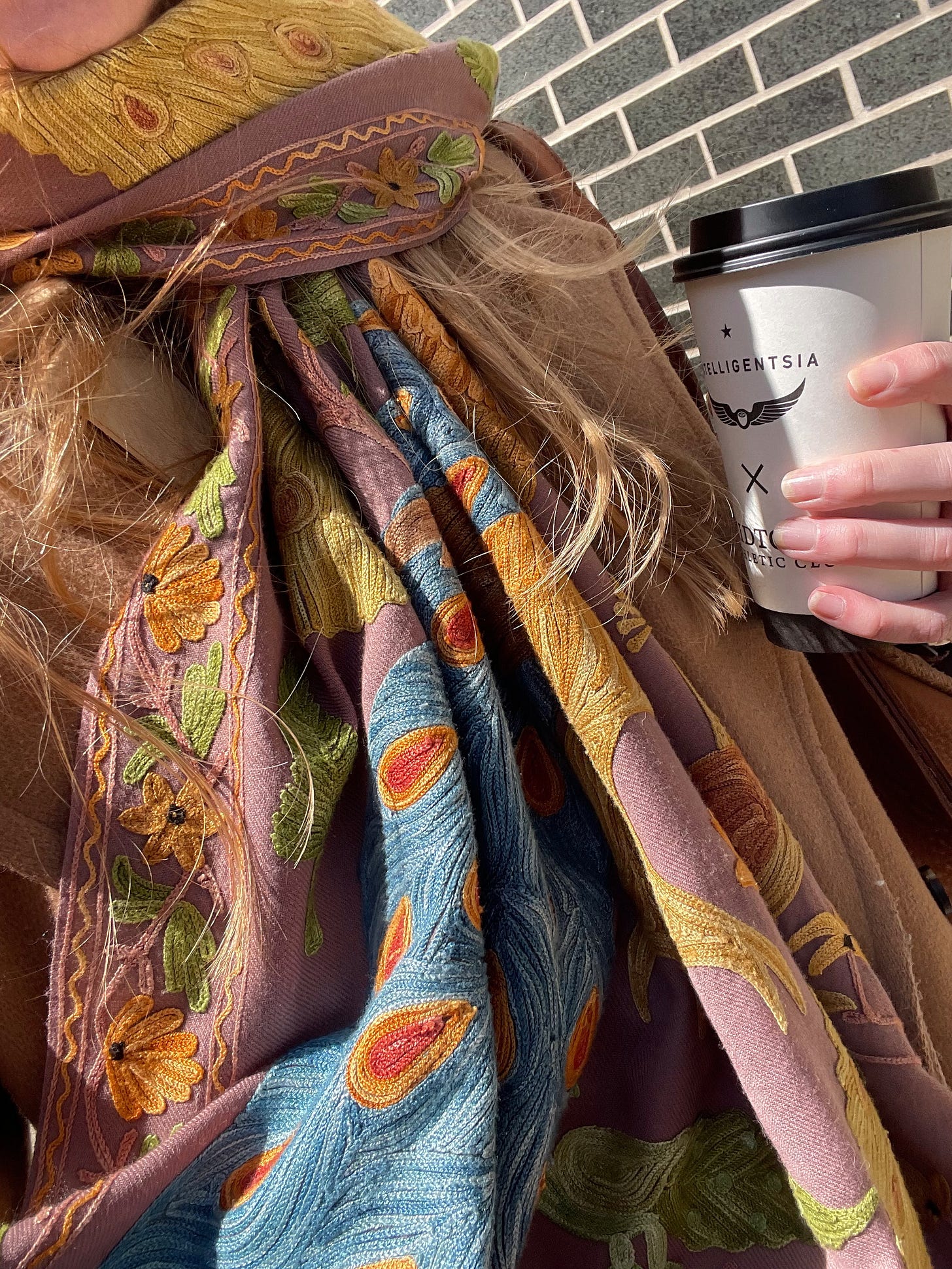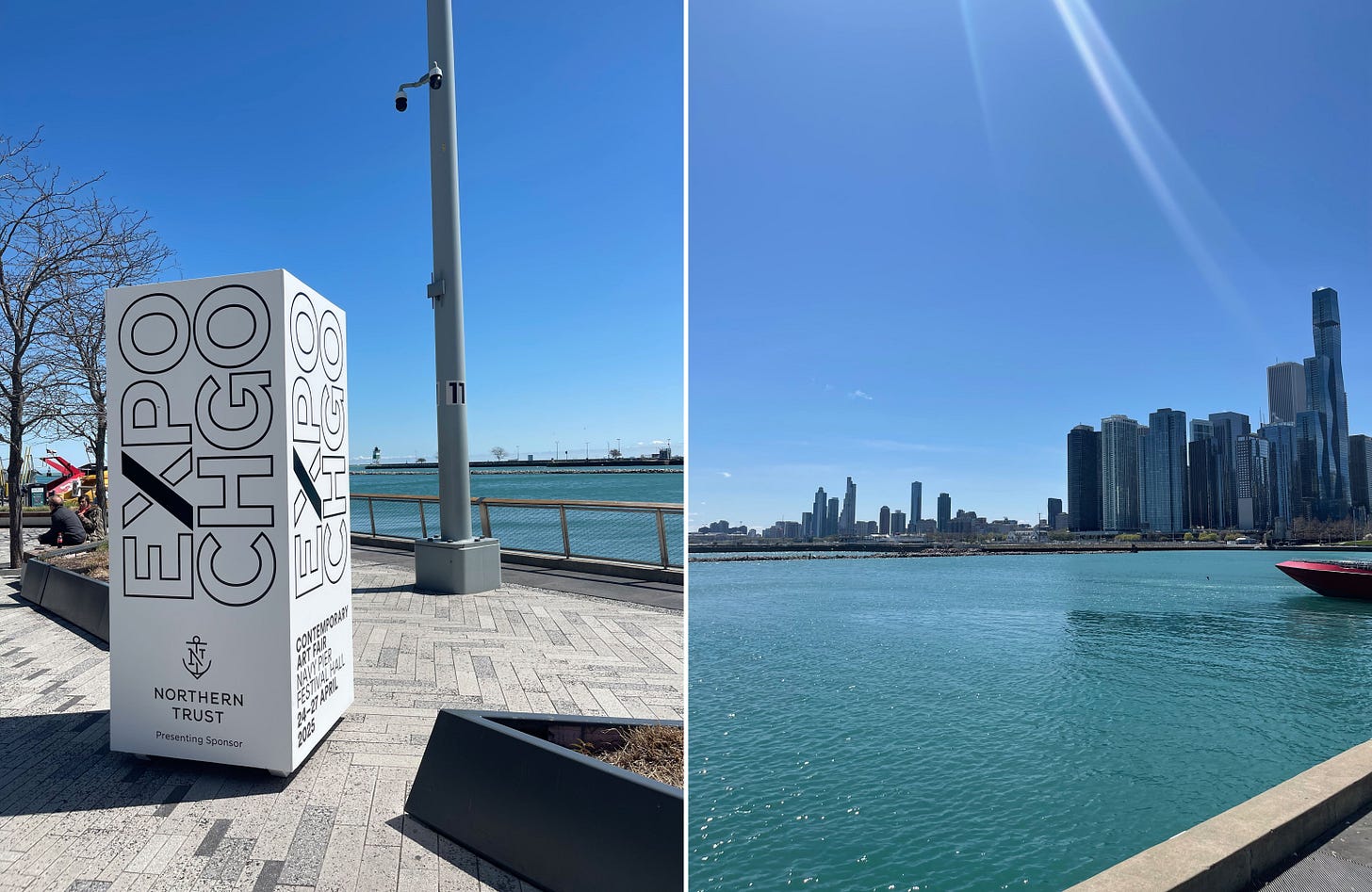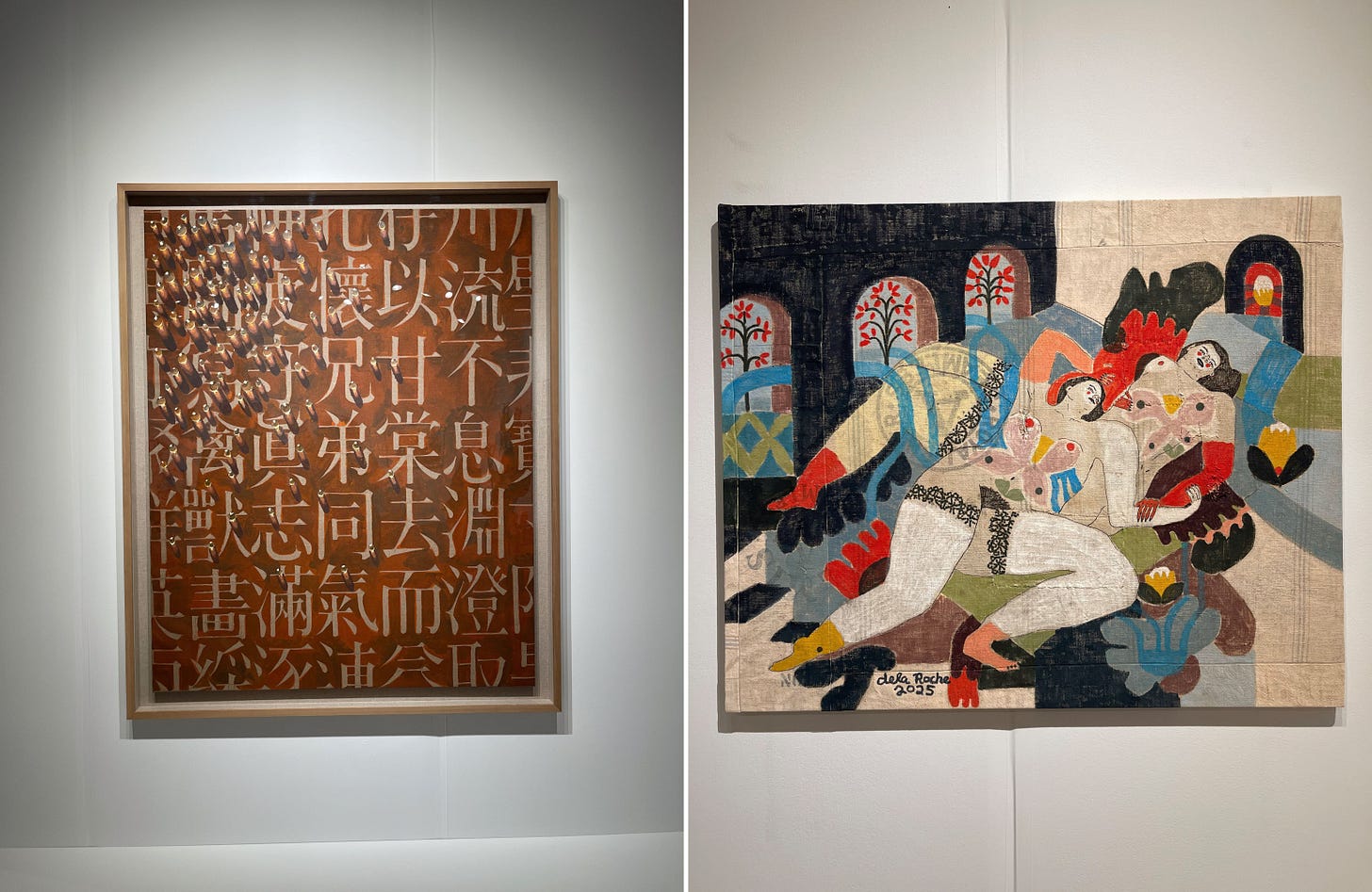Dispatches: EXPO Chicago and the World on Display
Hello from the world-renowned contemporary art fair.
In today’s letter: a look at some of the highlights from EXPO Chicago parties, openings, and booths.
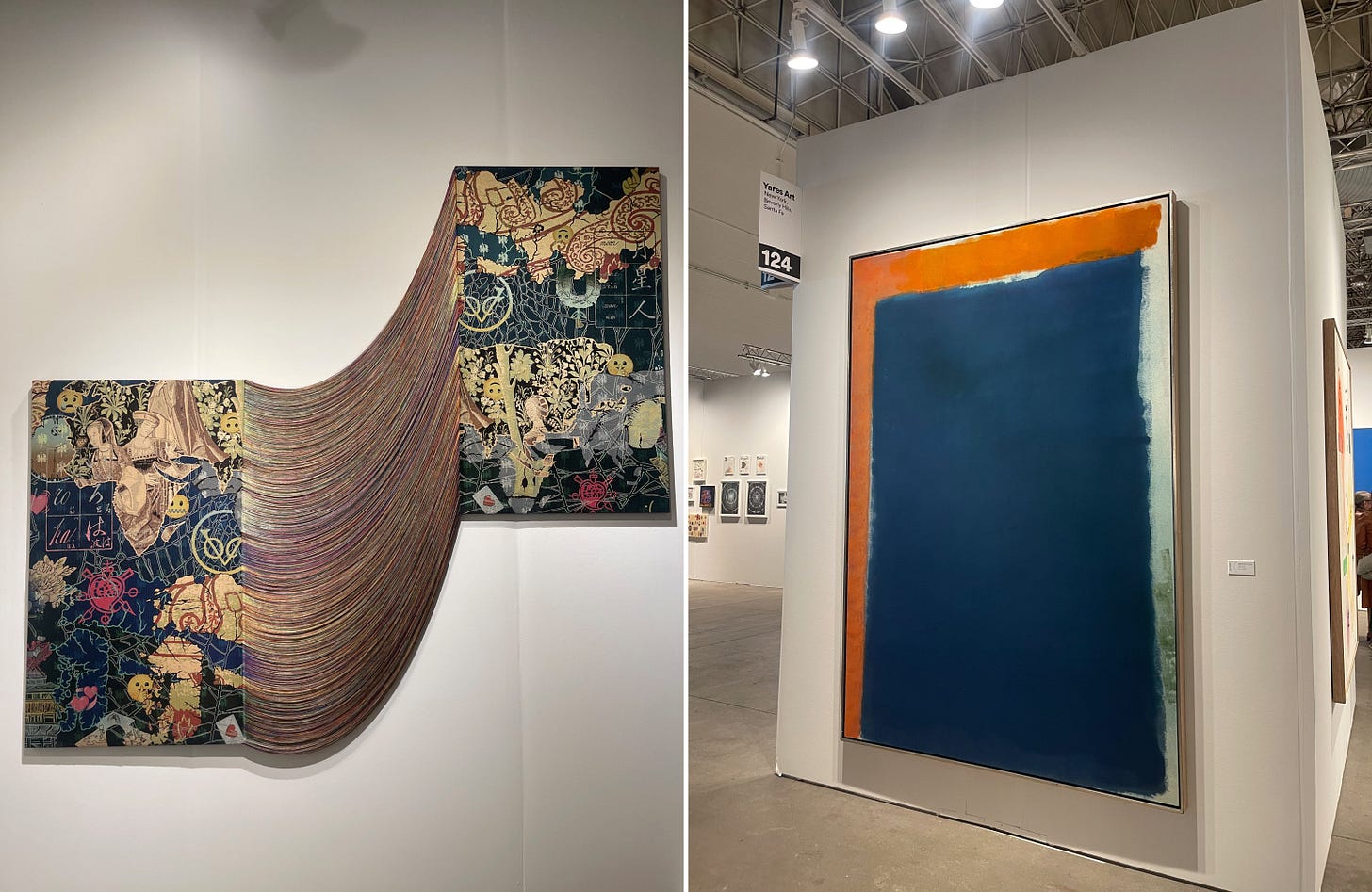
After weeks of overcast skies, Chicago is now finally bathed in light. With the arrival of spring, plans for the warmer months have begun to take shape. Each year, I compile a “Chicago & Midwest Bucket List” to encourage more thoughtful exploration closer to home. Madison, Wisconsin, was ticked off last weekend; Lake Forest, Illinois, is next. But the list is more than geography; it’s also a running tally of events, exhibitions, and cultural moments worth catching.
This past weekend, the city was brimming with activity: One of a Kind Show, MubiFest Chicago, and Independent Bookstore Day all beckoned. Still, I opted to focus on EXPO Chicago, the city’s flagship contemporary and modern art fair. While the main exhibition was anchored at Navy Pier, the entire week was punctuated by gallery openings, panels, and after-hours events throughout the city.
On Friday evening, a handful of galleries stayed open late. The plan was to hop between several, but we found ourselves lingering at SoNa — a warm and engaging space that quickly became a favourite. We managed a brief stop at Andrew Rafacz Gallery just in time for a glimpse of Resonating Color, a vibrant presentation of textile works by Jana Vander Lee, which deserves a more focused visit before it closes in May.
But it was SoNa that left the lasting impression. The current exhibition, Article 1: Human Dignity Shall Be Inviolable by Kermit Berg, features quietly powerful photographs taken around Berlin’s Bundestag, reflecting on the tension between resilience and vulnerability in democratic life. Berg himself was present and spoke with us in-depth about his work and process.
Afterwards, the gallery’s owner offered to show us additional works by other artists. Expecting perhaps a quick peek into a back room, we were instead led through a sunlit courtyard to a second building — a mix of studio and private residence — the sort of dreamlike urban setup that makes you reconsider your own life choices. The work of Sharon Bladholm was particularly striking, and I left with a tiled coaster by the artist.
By evening’s end, we were already strategising our return, ideally as regulars, and perhaps as future friends of the space. At the very least, we’ll be back for the next opening.
On Saturday, I (along with what seemed like half of the city) headed to Navy Pier to walk through the main event. To put it simply, EXPO itself was nothing short of extraordinary. The amount of creativity on display from galleries, museums, and other artists around the world was staggering. I probably should have gone all three days and divided the massive exhibition space into manageable sections — food for thought for next year.
Over 170 leading galleries from 36 countries participated this year, with a notable emphasis on Korean and Latin American galleries. The fair's geographic diversity was particularly impressive, drawing voices from Cape Town to Bucharest to São Paulo.
We began our visit with a panel on contemporary Korean art, and the discussion traced the growth of Korea’s contemporary art ecosystem over the past two decades, from institutions and collectors to the artists themselves. Given the global spread of Korean culture, it’s no surprise that visual art is following suit. I’ll be doing a deeper dive into contemporary Korean women artists soon and look forward to sharing more.
After the panel, we spent several hours weaving through the booths, speaking with gallerists, asking questions, and occasionally just pausing to admire. There was a genuine sense of dialogue and curiosity throughout, the kind of atmosphere that makes a fair like this more than just a commercial platform — it felt, instead, like a world-class cultural gathering.
While a number of fairgoers were actively acquiring works, most, like us, were content to browse, inquire, and admire. Even so, reports of key sales were telling: a work by Korean artist Chun Kwang Young was said to have sold for $155,000; Maia Cruz-Palileo’s La Canallas (The Scoundrels) (2018) for $50,000; and numerous booths reported complete sell-outs.
While these figures belong to a different price tier than those at The Other Art Fair, which I recently wrote about, it’s clear that collectors across the spectrum remain engaged and willing to invest. A reassuring signal for the market, and a hopeful one for artists everywhere.
One day, I’ll be among the EXPO-level collectors. Until then, here are a few personal highlights from the fair:
Of course, my favourite moments were being able to connect with gallerists and artists. Once I started chatting, I couldn’t really stop, and ended up in a series of engaging, thoughtful conversations with individuals who had travelled from near and far. Many were attending EXPO Chicago for the first time. For some, there was an element of culture shock; most wished more attendees would engage more deeply. But the overwhelming sentiment was positive. And everyone, unsurprisingly, had glowing things to say about Chicago.
I began at Lusenhop Fine Art, based in Cleveland, which has long focused on placing works by African American artists in both public and private collections. There, I met the gallery’s founder and the artist Melvin Clark, both of whom were generous with their time and insights.
Later, I found myself speaking with representatives from the Eiteljorg Museum of American Indians and Western Art in Indianapolis, a cultural institution I hadn’t yet encountered but that quickly earned a place on my summer excursion list. They were showcasing contemporary Native American work that was striking in both execution and presence. Their current museum exhibition, Radical Stitch, celebrates contemporary beadwork, and by all accounts, it’s one not to miss.
Finally, a stop at gaep gallery from Bucharest introduced me to the artist Cătălin Pîslaru, who had created an entire series, Clouding, specifically for EXPO. His minimalist yet vividly expressive canvases blur the line between figuration and abstraction, layering cloud-like forms over crisp, architectural references — such as swimming pools, stairwells, and façades. We spoke at length about the work, the fair, and my own fond memories of Romania from a past trip, a fitting close to an afternoon built on exchange and discovery.
Among the booths, HOFA Gallery (House of Fine Art) from London stood out for its striking use of colour and texture. The two pieces pictured above were personal favourites — one, a layered composition with tactile paper elements; the other, a richly painted work with remarkable physical depth. Both would have been happily taken home.
Chicago galleries were well represented and featured incredible art, such as the Rhona Hoffman Gallery, Volume Gallery, Povos, as well as local businesses, including Chicago Printmakers Collaborative, a Lincoln Square-based gallery and studio space.

The booth from the Center for Native Futures was a standout, visually arresting and conceptually bold. The organisation is the city’s only all-Native artist-led arts nonprofit, founded during the pandemic by a group of Native artists determined to establish a lasting Indigenous presence in the urban cultural landscape of Zhegagoynak (Chicago). One exterior wall featured a series of stark vinyl banners with sharp, darkly humorous white-on-black text part of YOUR REFUSAL TO SEE: A Native Guide Project (2024) by Colorado-based Navajo, Creek, and Greek artist Anna Tsouhlarakis. With lines like “Unfortunately, you can’t smudge off your colonizer vibes” and “Oops, I think I ran over your spirit animal this morning,” the work pulled no punches, an unapologetic and compelling reminder of the power of art to provoke, educate, and reclaim space.
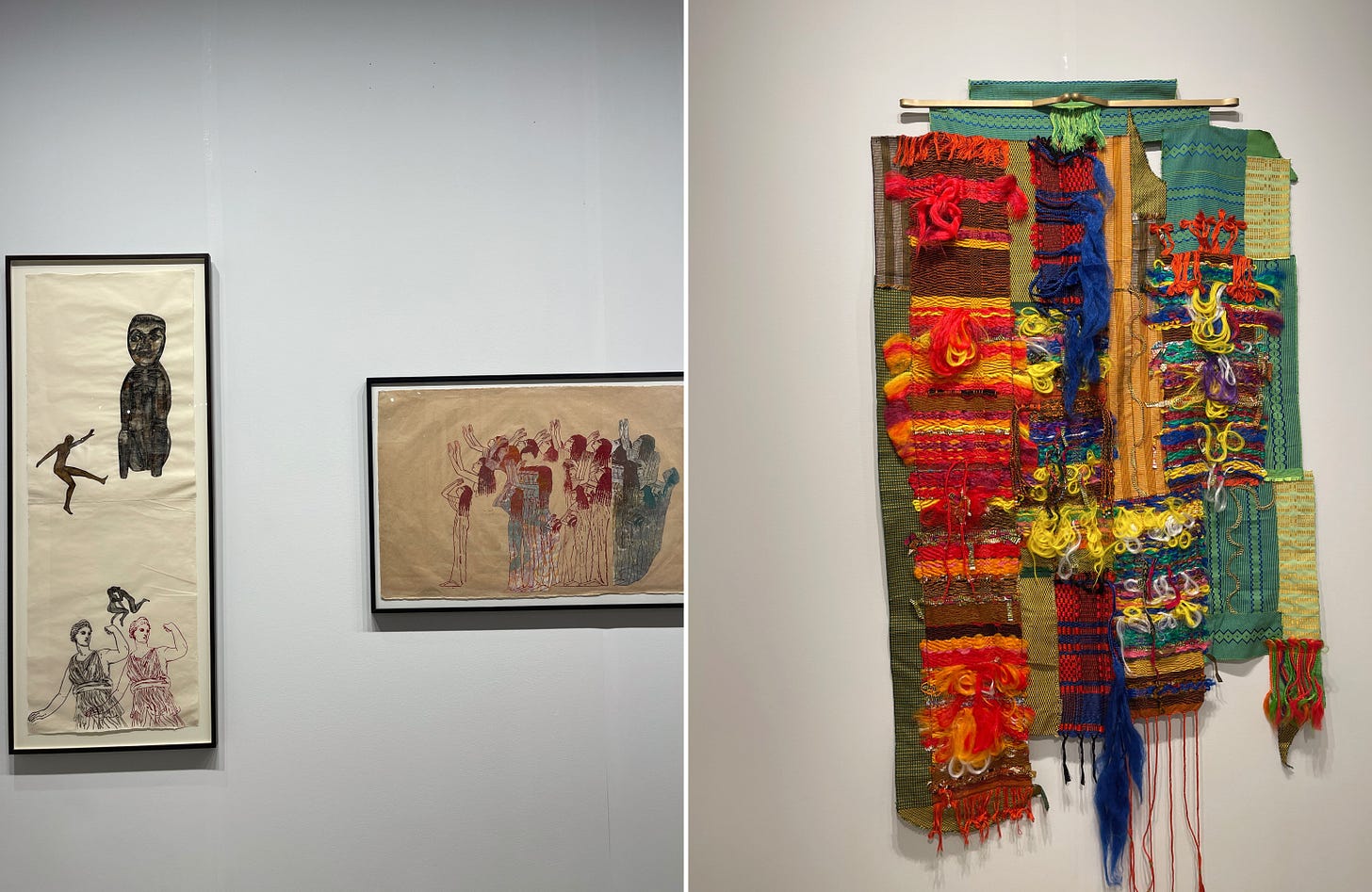
All told, EXPO Chicago delivered exactly what one hopes for from a world-class art fair: a sense of discovery, meaningful dialogue, and an invigorating glimpse into the global cultural landscape — all set against the steady buzz of one of America’s most architecturally and artistically rich cities.
From Berlin to Bucharest, Seoul to Indianapolis, the fair's offerings were as expansive as they were thoughtful. But beyond the sales and spectacle, it was the quieter moments (a conversation with a gallery owner, a chance encounter with a new artist, a glimpse of a work that lingers in the mind long after) that offered the most lasting impressions.
Here’s to more of that, and to returning next year with even more time and maybe, one day, a collector’s budget.





